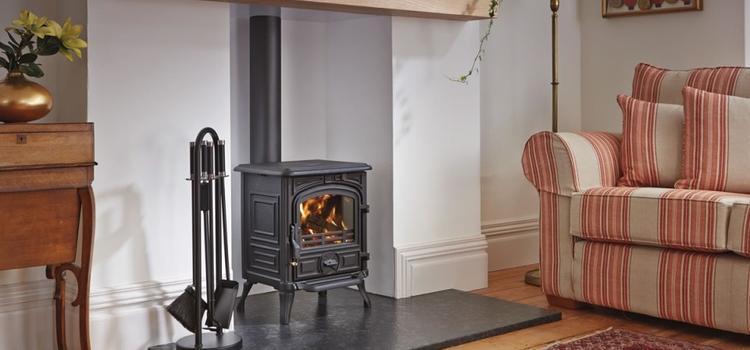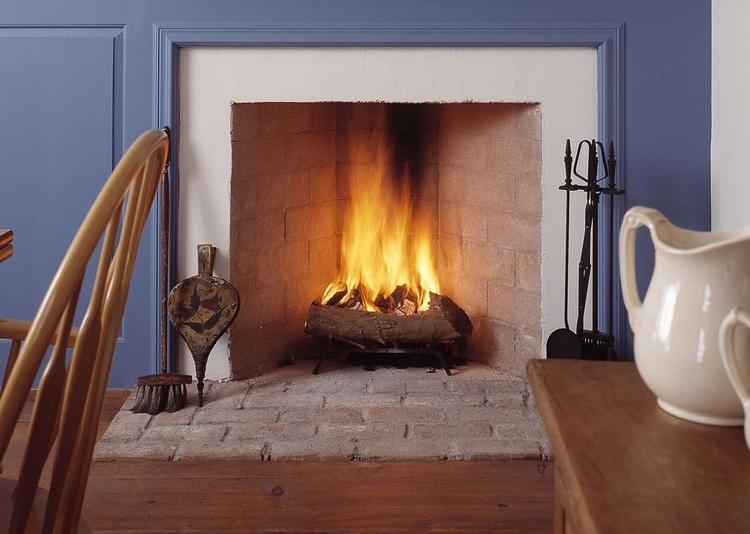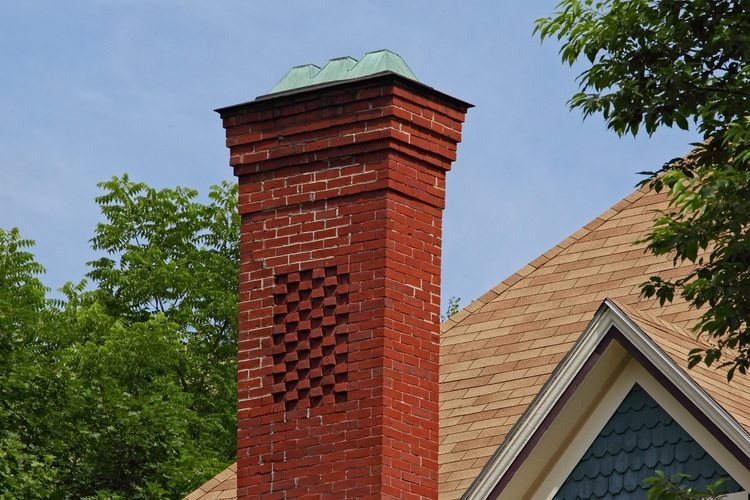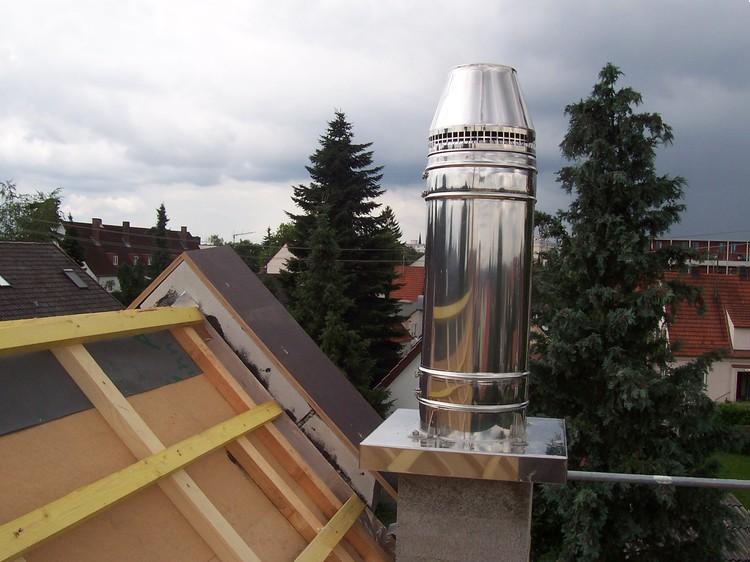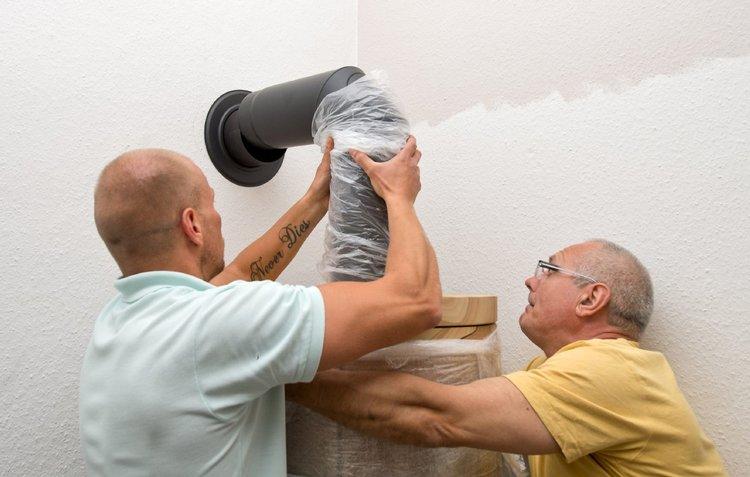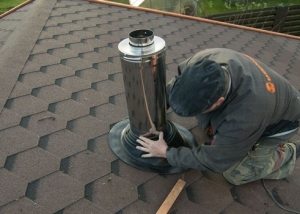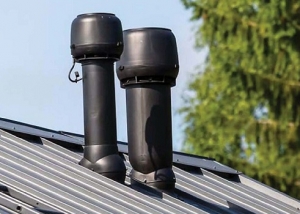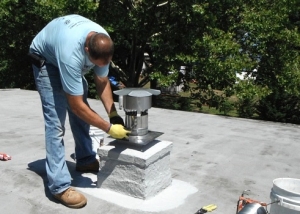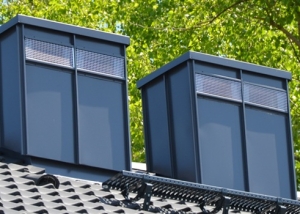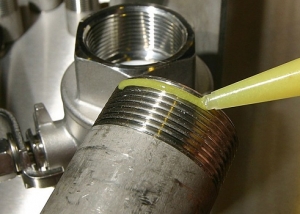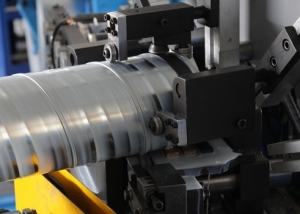A fireplace is a design often used in private homes to heat a room and create an aesthetic atmosphere. To ensure the correct and safe operation of the home fireplace, it is necessary to choose and design the chimney correctly. The chimney must be strong and reliable to prevent corrosive smoke from entering the living room. Another important aspect when choosing a chimney is the ability of the material to withstand the aggressive effects of soot mixed with condensate.
Content
Chimney functions for fireplaces and stoves
Without going into details, we can say that the furnace chimney is intended only for the removal of corrosive products of combustion into the atmosphere, which are formed during the combustion of any fuel. But in fact, the smoke channel is a full-fledged part of the heating device. Without a chimney, it is impossible to operate either a furnace or a boiler, or gas equipment.
The operability of an autonomous heating device depends on how much oxygen enters its furnace. It is incorrect to say that the more oxygen will be supplied to the device, the better it will work: there must be a strictly defined amount of air. Both an overabundance and a lack of oxygen can lead to loss of equipment power, its unstable operation or increased fuel consumption.
The principle of operation of the chimney can be described as follows:
- by and large, each chimney is part of a looped system;
- After passing through the chimney, the exhaust caustic gases are discharged into open air. Due to this, a discharge occurs in the receiving part of the furnace or boiler, and clean air from the atmosphere is launched into the smoke sleeve;
- The oxygen entering the chimney burns out, heats up and is again removed from the system to the outside. This happens until the fuel is exhausted in the furnace.
If you choose the wrong chimney size for the fireplace or use a chimney that is completely unsuitable for other characteristics of this type of heater, the circulation cycle is violated. This leads to undesirable moments, such as:
- excessive consumption of fuel;
- the throwing of carbon monoxide, hazardous for life, into a residential building;
- high probability of fire from the release of sparks;
- unproductive operation of the heating unit;
- inefficient combustion of fuel.
A good chimney should ensure a condition in the furnace system in which solid fuel will burn without residue, and at the same time its over-consumption will not be allowed. Other important aspects that influence the choice will be ease of installation and the possibility of further maintenance.
Which chimney is best for a stove or fireplace?
When deciding which chimney is best suited for the fireplace, you should focus on the type of heater. For wood stoves and fireplaces, those chimneys are suitable that are undesirable when using, for example, gas equipment.
1. Chimney for a stove or fireplace made of brick. The most traditional material for the installation of stove chimneys, used since ancient times. Contact with aggressive substances and constant presence in a high-temperature environment can withstand far from all types of bricks. Silicate brick quickly enough collapses under the influence of high temperature, so it is not suitable for these purposes at all.
Ceramic brick is also not the best way to install a chimney for a fireplace insert. Many manufacturers indicate in the characteristics of the product that ceramic brick is able to withstand temperatures up to 800 degrees, but in fact this temperature is critical for this material. A brick chimney cannot function continuously in such conditions, and already at a temperature of 650-700 degrees the material begins to undergo destruction.
The best option for building a brick chimney is a refractory brick, but subject to the manufacturer’s availability of an appropriate certificate.
Brick chimneys have a relatively low draft, which makes their use acceptable for solid fuel equipment, but undesirable for gas boilers. A smoke hose made of brick accumulates heat not bad, but needs proper assembly - it is better to involve specialists for its laying.
2. Ceramic chimneys for fireplaces. Ceramic fixtures are a dense ceramic pipe placed in a casing made of expanded clay concrete or brick. For the manufacture of chimneys, only special heat-resistant ceramics are used.
The assembly of the ceramic chimney for the fireplace is made from separate sections. Connecting seams must be insulated with heat-resistant sealant. The outer shell also has a sectional structure, there are holes in it for installing reinforcing rods of metal. The connection of the blocks is carried out with an ordinary solution. A layer of refractory insulation is laid between the ceramic pipe and the outdoor units.
3. Sandwich chimneys (modular designs). Chimneys made on the principle of “pipe in pipe” are made of heat-resistant stainless steel sheet (both circuits). The inner pipe, which is directly the smoke channel, must also be acid resistant. AISI304, 310, 321, 316, 430, 439 steel grades are suitable for the production of the inner pipe. An insulation layer also passes between the layers of steel pipes, most often made of mineral wool.
Important! Another important requirement for steel sandwich chimneys is the high corrosion resistance of the weld, which is no less than the corrosion resistance in all other parts of the product.
4. Asbestos-cement pipes. Controversial option as installation of smoke channels. Their use is justified only in those cases if the temperature in the system does not rise above 300 degrees. But to guarantee such conditions is difficult, therefore, experts advise to avoid building structures to remove smoke from asbestos cement.
Chimney requirements for stove and fireplace
There are special rules regarding the operation of flue ducts.
1. The choice of the shape of the cross section of the chimney for the fireplace. The draft in the chimney cavity depends on this parameter. The best dynamic indicators are recorded for round pipes (ceramic chimneys, sandwich chimneys). If you choose among pipes with a profile section, then a square section of the chimney will be more preferable than a rectangular one. Pipes with an oval section for these purposes are almost never used on their own, their main application is the sleeve of rectangular brick channels.
2. Diameter of the chimney for the fireplace. Recommendations on the appropriate diameter of the chimney pipe are usually indicated in the technical data sheets supplied with the heater. The dimensions of the smoke channel always correspond to the dimensions of the outlet pipe of the fireplace insert. If the manufacturer’s instructions are not available, then the calculation of the cross-sectional diameter is as follows:
For wood-fired sauna stoves with an open firebox, a proportion of 1 to 10 is taken relative to the firebox. This rule is relevant if cylindrical pipes are taken as a chimney. For chimneys of square cross section, the ratio to the size of the furnace is taken in a ratio of 1 to 1.5. With a heat transfer of less than 300 kcal per hour, the minimum section size will be 140 x 140 mm.
An ordinary closed fireplace insert is usually equipped with a nozzle, the diameter of which is 200 mm (with a rectangular channel of 270 x 140 mm). Open fireplaces with a firebox in more than 80 cm, have a diameter of 250 mm.
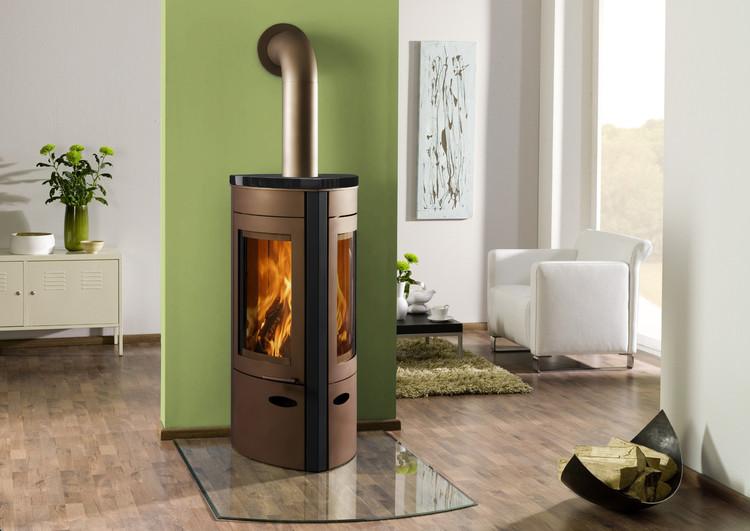
The diameter of the chimney is selected depending on the type of furnace, the shape of the cross section is preferably round
3. The height of the chimney chimney. The scheme for calculating the height of the smoke channel is dictated by the technical characteristics of the material of which the sleeve is made, as well as the structure of the building itself. Height determines one of the main factors in the operability of a heating device - its traction. The higher the chimney pipe, the longer the air remains in the cavity of the smoke channel, heats up more strongly and, accordingly, forms a large draft.
To avoid difficulties in igniting a fire in a stove or fireplace, do not use chimneys with a height of less than 5 m. It is also dangerous to smoke the room when burning solid fuel and even the occurrence of backdraft.
Important! With any actual length of the chimney, the height of its elevation above the roof slope is fixed: it cannot be less than 500 mm.
The height of the smoke channel is adjusted depending on the location with respect to the vertical line of the ridge. The option is allowed when the top of the chimney is flush with the ridge. This happens if the distance from the pipe to the ridge is from 1.5 to 3 meters.
Chimney height determined at the design stage. For its calculation, the following parameters are required: firebox size, cross-sectional area, height and location smokestack head in relation to the ridge of the roof and the power of the heater.
4. Compliance with the size of the room. The area of the room inside which the installation of the fireplace is planned should not be less than 15 square meters. The draft in the smoke channel is directly related to sufficient air exchange in the room, as well as its ventilation.
How to properly position the smoke channel
Chimneys by type of location are divided into:
- mounted - are installed above the heating device and are actually its vertical continuation;
- freestanding (root) - the smoke channel is located vertically to the side of the unit, a separate foundation is built under it;
- wall channels - a chimney is designed in the wall of a house.
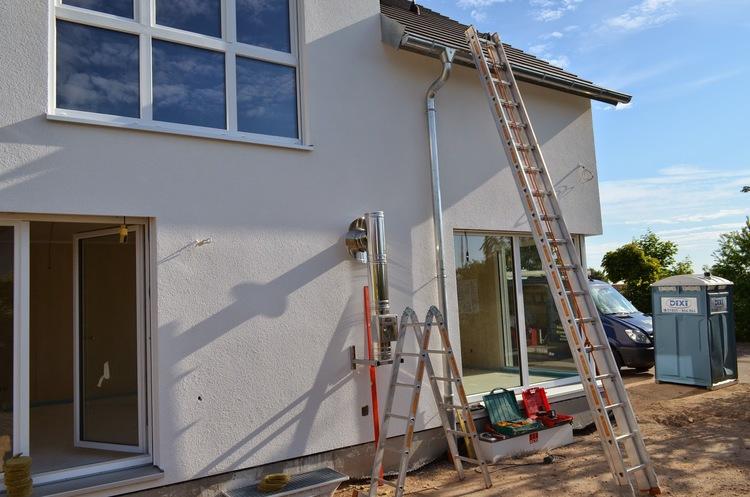
The chimney can be led out through the wall, it is possible to do this even in an already built building
With respect to the building, the location of the chimney can be as follows:
- Outdoor. Its advantages: ease of installation both in a new house and in a previously built one; service availability.
Disadvantages of the external location: the chimney needs to be warmingorganizing the tightness of the passage through the wall. It is quite difficult to give an aesthetic appearance to the chimney with its external location; inevitably, its rise above the level of wind backwater.
- Inner. Advantages: the internal arrangement provides good traction, the chimney can be in the most upright position.
Disadvantages of the internal location: additional work during the passage of the smoke channel through the interfloor and roof ceilings, very careful observance of fire prevention measures in these areas. Such a chimney will also occupy the useful area of the room.
How is a chimney device for a fireplace
Assembly and installation of a chimney made in each case individually. The nuances of the construction of the chimney will be different for all materials:
- Brick flue structures should be located on the foundation, it is important that the correct layout of the rows of brickwork is observed. The composition of the solution matters. For such structures you need a squeegee, a head, and sometimes a smoke box.
- Ceramic chimneys also require a foundation. Correct installation is possible only when all modular elements are fixed as securely as possible. For chimneys made of ceramics, a shaped element is required - a revision with a tee.
- Corrosion-proof sandwich chimneys are mounted using brackets. To ensure the vertical slope of the channel, bends are used. When arranging passages through the roof or floors, a head and a smoke box are also needed.
Between any chimney pipe and combustible structures there should be a non-combustible groove filled with basalt wool. The distance between the surface of the chimney channel and the ceilings is at least 13 cm for structures of the “pipe in pipe” type and at least 25 cm for single hoses. Brick chimneys instead of non-combustible cutting can have a thickening of up to 38 cm (approximately one and a half bricks).
Observing vertical tolerances is also an important issue. A vertical pipe can provide better traction, and a large number of inclined or horizontal sections degrade traction. If the chimney cannot be made straight, then the vertical displacement is done using inclined parts. Connecting the fireplace to the chimney requires a horizontal section, but its length is strictly limited to 1 meter. The sum of all sections with a shift from the vertical axis along the entire length should not be more than 2 m.
Construction of a chimney for a barbecue
In a country house, the question may arise with the construction, the choice of materials and size for the chimney, not only for the fireplace, but also for the barbecue. The construction of the chimney must necessarily be thought out, the first step will always be a drawing of its plan on paper.
Important! Proceed to the construction of a chimney for a barbecue can only complete solidification of the solution of the main part of the structure.
The simplest solution for the construction of a chimney for a barbecue is the use of cement mortar and reinforcing metal bars. The chimney skeleton is bent and then welded from metal rods. The metal frame is cemented, entangled in a mesh. A solution is applied to the rods from the inside and outside. After the cement mortar has hardened, the chimney is coated on the inside with refractory clay. An arch is formed after the solution has solidified in the chimney; it requires a plywood template.
The drying time of the cement mortar used in the construction of a barbecue and chimney for it is 3-4 days. Until this time, it is impossible to light a fire in a furnace, otherwise the walls of the structure will crack and the barbecue will be unsuitable for further use.
The question of how to make a chimney for a fireplace is solved with the mandatory consideration of all requirements for technology and safety. If they are violated, not only the efficiency of the fireplace, but also the vital activity of all people in the heated room are at risk. Therefore, the best option for those who do not have the necessary experience in the construction of such structures is to turn to specialists verified in this matter.
